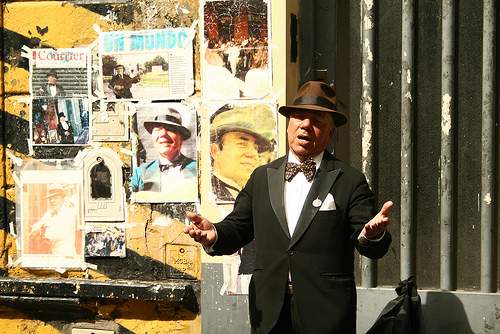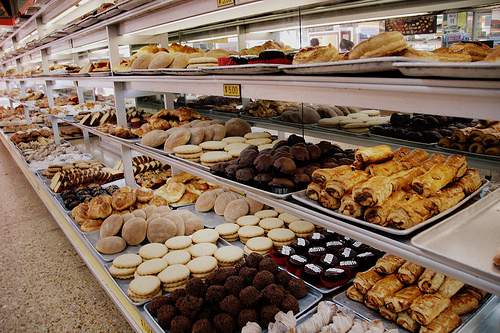Buenos Aires has never been the kind of city to shy away from the limelight. This is the city where a young Che Guevara inspired decades of spirited rebellion; where porteños – as city-dwellers are known – dance sultry tango along cobbled streets and stage fervent political protests at least once a month.
Today, it’s a blend of the old and new, as renowned for its fashion-forward party scene as it is for its tango halls and prime steaks. Increasingly cosmopolitan and ever popular amongst travelers and tourists of all ages, this is a city with its finger firmly on the pulse of the contemporary. From sweltering summer days to chilled winter nights, this is your year-round guide to immersing yourself in Latin America’s coolest capital.
Spring: Join the eternal fiesta
October – December
As the sun beats down on the sidewalks, Buenos Aires whirs into action, and porteños waste no time in shedding their winter clothing and celebrating the long afternoons over an endless fountain of beer and malbec (Argentinean red wine). Springtime is when the city rooftops light up with house parties and the air hangs thick with the scent of steak sizzling on the parrilla as locals enjoy asado (traditional Argentine barbecue) topped with spicy chimichurri sauce.
During the days, locals relax in the city’s popular parks and the active Buenos Aires’ couchsurfing group organizes many get-togethers where travelers and locals can connect. This is the perfect time of year to hire a bike and explore the city’s greenery. Reserva Ecologica Costanera Sur or the Bosques de Palermo (Palermo woods) are havens of tranquility amidst the traffic fumes and hustle of the city and provide ample people-watching opportunities at the weekends when picnicking families, hoards of bronzed Latino students and professional dog walkers juggling impossible amounts of canine companions congregate.
Spring is the season for socializing and sampling the city’s infamous nightlife and nothing pulls in the masses like the world-famous Argentine Tango. Attend a milonga to hear live tango bands and watch the locals practice their arrastres and boleos across the dance floor – Milonga La Independencia runs Tango classes in Spanish on Thursday evenings followed by a milonga.
Porteños eat late, party late and sleep late, and it’s an adjustment that can take travelers a while to get used to. From mega-clubs like Crobar to hip-hop at Club Lost, to the annual electronic mega-fest Creamfields, Buenos Aires is never short of options for the twilight hours. For something a little more unique, La Bomba Del Tiempo is held every Monday at Konex featuring an improvisational set from Argentina’s most prominent percussionists and the chance to jump, shake and grind with one of the most electric crowds in the city. Keeping on top of the hippest nights and offers can be a full-time occupation so keep an eye on EnterBuenosAires.com for seasonal updates.
As summer rolls around, Christmas – a hotter and stickier affair for those used to a northern climate – acts as a culmination of the celebratory period. Lavishly decorated Christmas trees and fairy lights decorate the streets with sparkle for the festive season and on Christmas Eve the city skyline explodes with colorful fireworks.
>> Read 8 Reasons to Stop Putting Off That Argentina Trip and check out these tips for having an indie experience in Buenos Aires.
Summer: Head to cooler climates
January – March
The summer heat turns the city into a stew of sticky bodies and unbearable humidity, rendering the city’s sights best viewed from the comfort of an air-conditioned taxi. Many porteños leave the city at this time and often bars, clubs and restaurants close down for the summer months.
This is the best time to head out of town and explore further afield. Thankfully the surrounding areas of Buenos Aires hold numerous attractions easily visited as a day or weekend trip. The closest seaside resort to the city is Mar del Plata (around 6 hours by bus) although its alarmingly popularity throughout summer means you’ll be lucky to find a few square feet of sand to yourself. A mere hour from the city centre by train, Tigre offers a more tranquil day trip complete with cruises along the Delta river, a sprawling weekend street market and even a small theme park.
Argentines flood the ferries to Uruguay, either to the sleepy port town of Colonia del Sacramento, the market capital of Montevideo or Punta del Este – the St Tropez of Uruguay. Colonial Express and Buquebus both run daily ferries to several destinations in Uruguay.
For those that linger in the city, there are numerous government-run events to keep locals and tourists entertained throughout the heat wave.
>> Read 10 Places in South America to Escape the Northern Winter
Autumn: Schooling and sightseeing
April – June
The school term starts in autumn so it’s an excellent time to enroll in a Spanish class and brush up on your language skills. Porteños speak at break-neck speeds and throw up colloquialisms that will challenge the most fluent of Spanish speakers but you can’t claim your traveler stripes until you’ve mastered at least some Buenos Aires slang, known as ‘lunfardo’. BASP (Buenos Aires Spanish School) and Hispan Aires are two well-respected and recommended institutes that offer a range of private and group classes for all levels.
This is also a good time for those looking to earn some extra pesos to search for English teaching work – there are plenty of teaching jobs in the city but the good ones get snapped up quickly. A TEFL qualification isn’t essential but will dramatically increase your options – EBC runs a popular course for graduates and will help you find work once you’ve completed it.
Thanks to the warm and breezy climate, autumn in Buenos Aires appears tailor-made for sightseeing and exploring the city’s many markets. Ramble through Recoleta cemetery to find Evita’s famous gravestone, head to La Boca to snap the obligatory photos of El Caminito’s colorfully painted houses and spend Sunday morning ogling the tango dancers and rummaging for antiques at San Telmo’s spirited street market. For clothes shopping, ditch the tourist-friendly malls of Florida street and head to Plaza Serrano in Palermo which comes alive at the weekends with young, hip designer boutiques and market stalls selling quirky accessories and alternative clothing.
Autumn also heralds the start of the football season and tickets go on sale for matches at the famous La Bombonera football stadium. Buy them from the ticket booth outside the stadium or book through a travel agent for better, reserved seating.
>> Read Famous Dances in Famous Places: When Feet Say More Than Words
>> Read Palermo vs. San Telmo
Winter: Pack on the pounds
July – Sept
Whether strolling around the city with a thermos tucked under your arm and a handful of gooey facturas (local pastries) or stuffing your face with empanadas and milanesa sandwiches, winter in Buenos Aires is the time to get to grips with the city’s myriad of restaurants and eateries and add a few kilos of insulation. Perfect the art of brewing and sharing Yerba Maté, the Argentinean’s favored hot beverage, or huddle inside a café with a cortado (coffee with milk) and a plate of alfajores (delicious soft biscuits filled with dulce de leche and coated in chocolate or powdered sugar).
Nightlife takes a shift indoors as the temperatures dip, but keep an eye out for discounted rates and special offers as bars and theatres try to tempt locals out to play. Buenos Aires Fashion week and the city’s annual Tango festival provide some indoor entertainment throughout the winter months.
>> Read Exciting Edibles in South America
Start planning your trip: find airfare to Buenos Aires , look for hotels in Buenos Aires, or book an Argentina tour.



